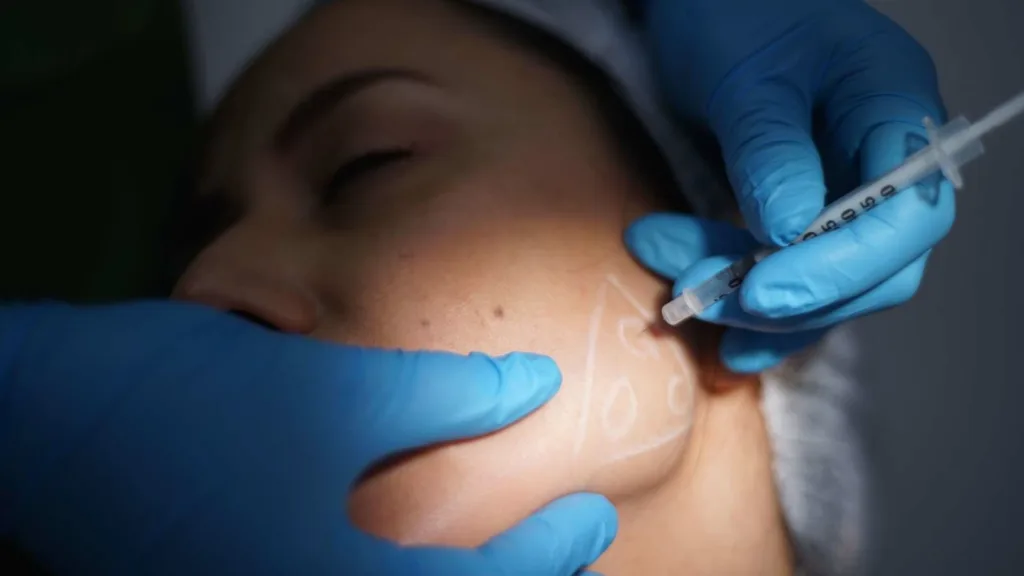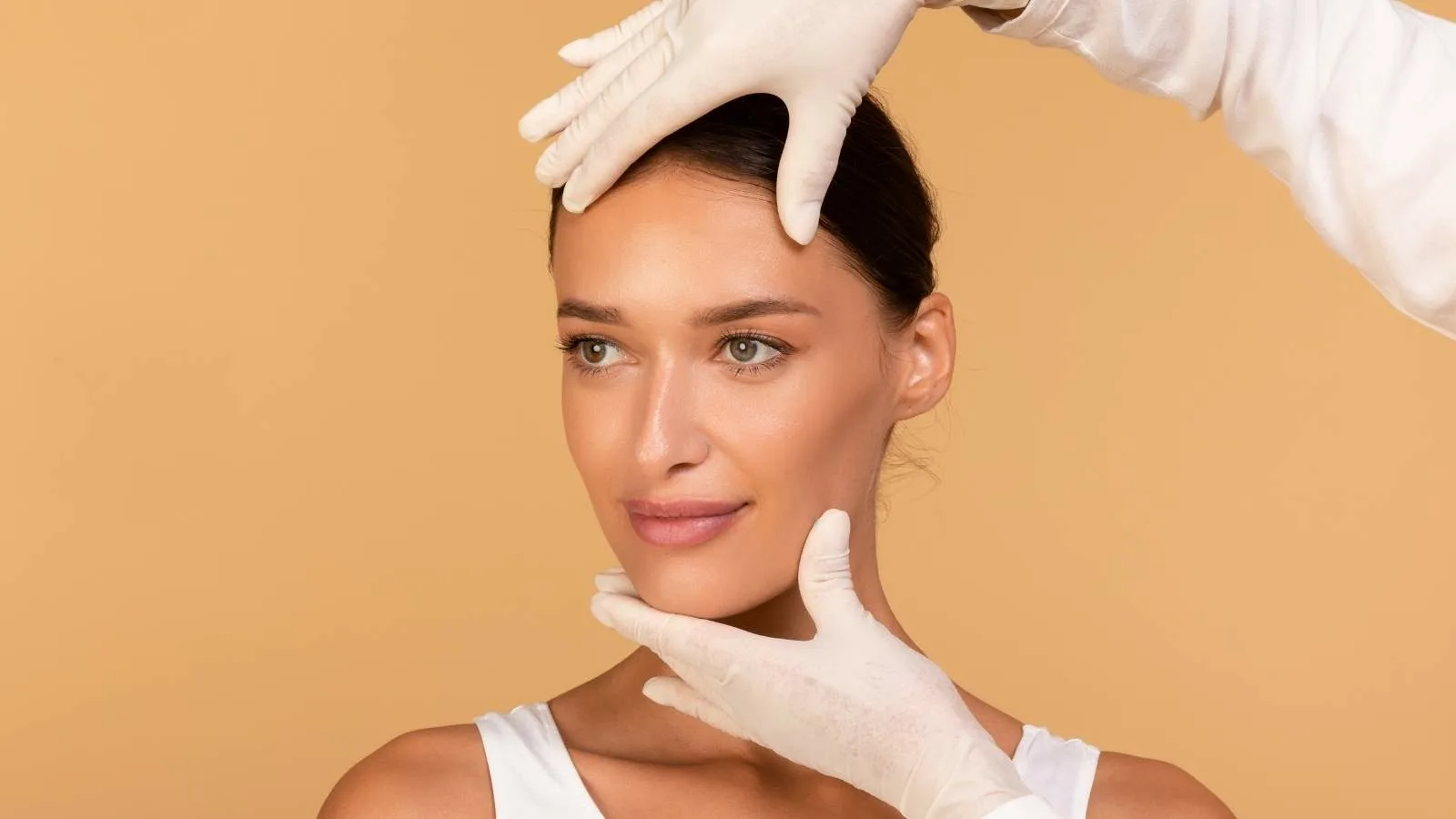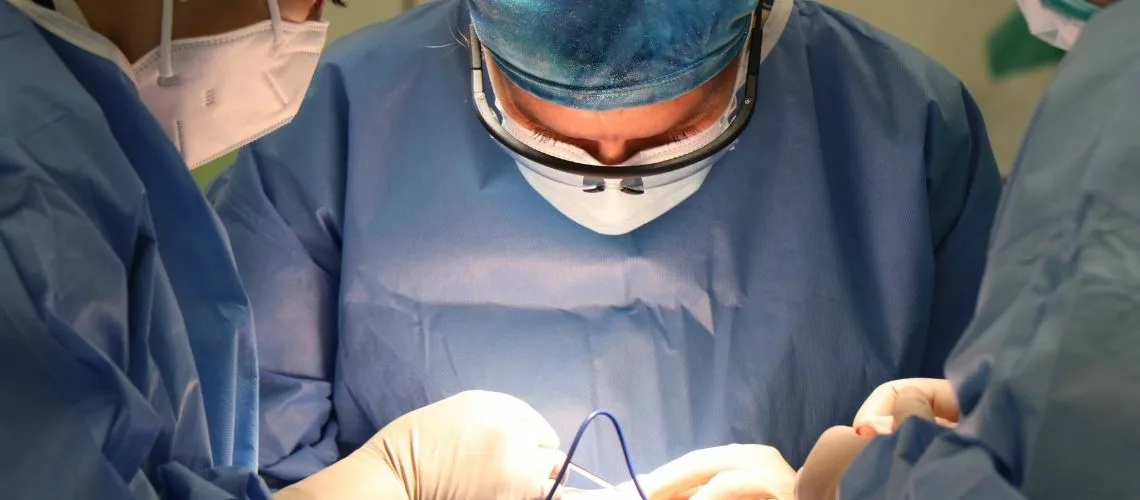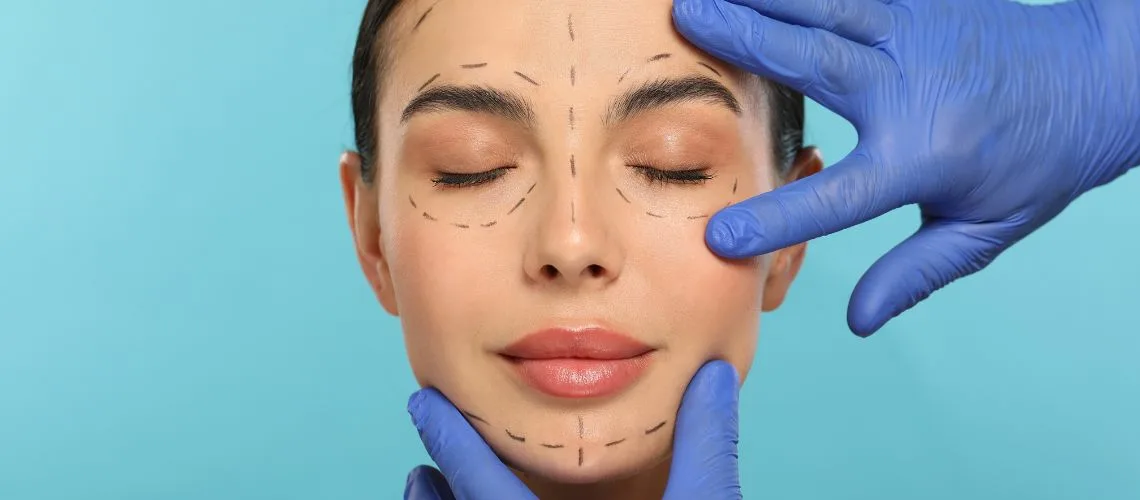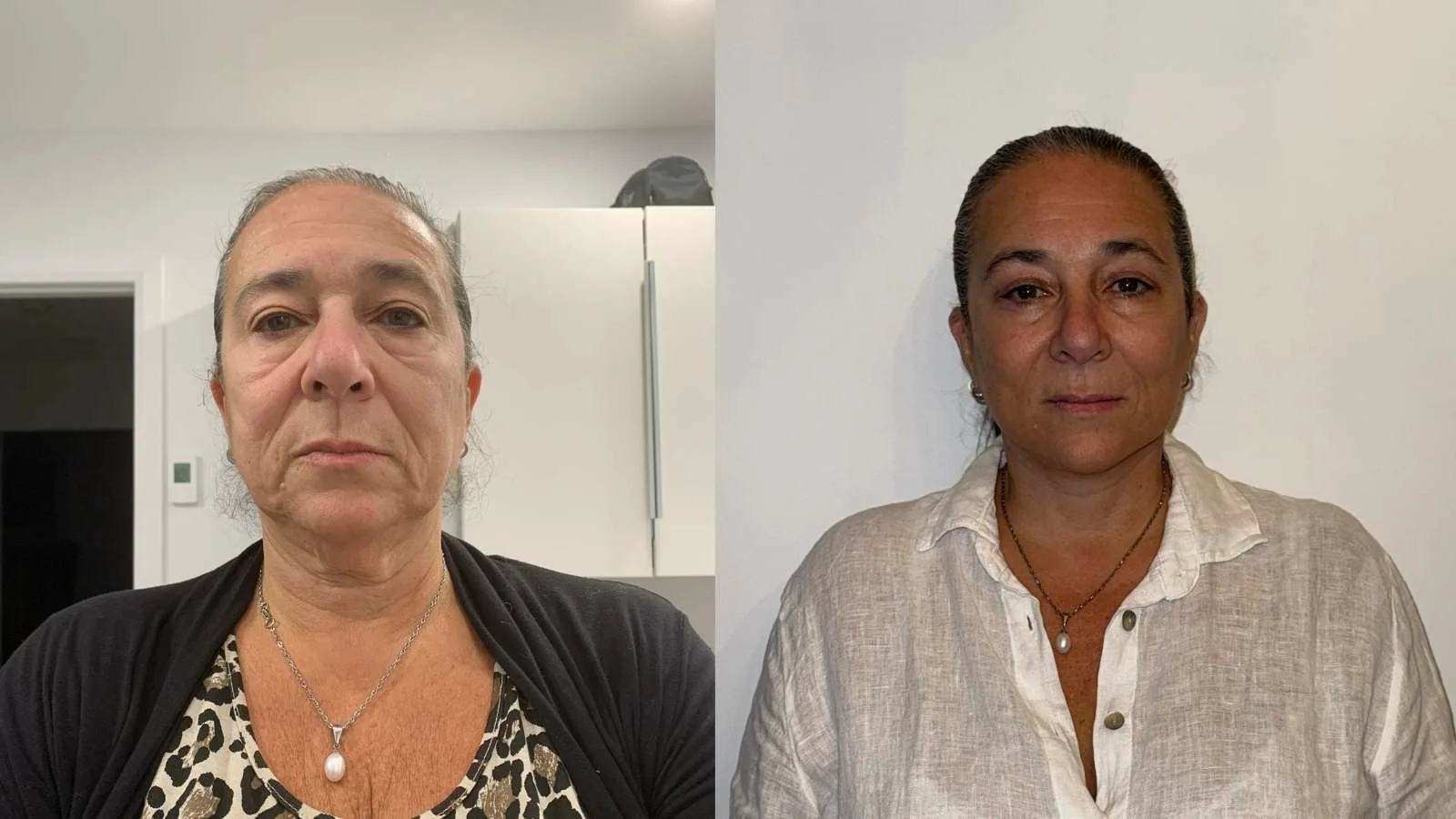Facial aesthetics methods include surgical and non-surgical procedures designed to enhance facial harmony. Treatments such as facelift, rhinoplasty, fillers, and botulinum toxin applications aim to correct asymmetries, restore youthfulness, and achieve balanced proportions.
Non-surgical facial aesthetics methods are minimally invasive options. Dermal fillers restore lost volume, botulinum toxin reduces dynamic wrinkles, and skin resurfacing improves texture. These procedures provide effective results with shorter recovery times.
Surgical facial aesthetics methods offer permanent solutions for advanced aging signs. Facelift, eyelid surgery, and brow lift tighten skin, reposition tissues, and create lasting rejuvenation while maintaining natural expressions.
Ideal candidates for facial aesthetics are patients with realistic expectations. A thorough medical assessment helps determine whether surgical or non-surgical interventions are more suitable for achieving desired facial improvements.
Which Treatments Are Most Commonly Used in Facial Aesthetics?
Today, when people talk about facial aesthetics, the first treatments that come to mind often include injections, laser therapies, and energy-based device applications. One of the most in-demand is Botox (botulinum toxin) injections. This method temporarily relaxes the muscles to soften fine lines and wrinkles caused by facial movements. It is especially effective on frown lines, forehead lines, and crow’s feet. Because it can be administered quickly, does not disrupt one’s daily routine, and shows its effects within a few days, it is a popular choice.
Another popular group is dermal fillers. Usually hyaluronic acid–based, these fillers add volume to areas of the face experiencing volume loss, giving a younger and fuller appearance. Cheekbones, the jawline, lips, and the nasolabial area (the line extending from the sides of the nose to the mouth) are commonly targeted. Fillers support the skin from underneath like a cushion and help define the contours of the face.
Laser therapies provide effective solutions for issues such as spots, uneven skin tone, and fine wrinkles on the skin’s surface. In particular, fractional lasers create micro-level damage that triggers collagen production and rejuvenates the skin. Chemical peels work similarly to lasers but use acidic solutions of different concentrations to renew the skin. Through this process, dead cells are removed, aiming to refresh the skin and eliminate tone differences.
Other energy-based methods include radiofrequency (RF) and ultrasound treatments. RF delivers controlled heat below the skin to boost collagen production, while ultrasound specifically targets deeper layers of the skin for tightening and a lifting effect. Microneedling techniques create very small channels in the skin, not only stimulating collagen production but also enhancing the absorption of serums and similar products applied afterward.
How Do Injectable Neuromodulators Like Botox Reduce Wrinkles?
To understand how Botox and similar neuromodulators work, it helps to first look at how our facial muscles function. Muscles in the face work constantly when we smile, frown, or furrow our brows. These repeated movements lead to more pronounced wrinkles and deeper lines in the skin. Botox is a protein that temporarily blocks the communication between muscle and nerve. It inhibits the release of a chemical called “acetylcholine,” which activates the muscle. Hence, the muscle in the injected area contracts less, and surface wrinkles soften.
You can think of this process like a door lock. The muscle wants to open and close the door, but Botox temporarily inactivates the “key” (acetylcholine) that fits into the lock. The door (muscle) therefore cannot move as readily as before, giving the skin surface a chance to rest from repetitive motion. The effects of Botox typically last for 3–6 months. Over time, the body regenerates nerve endings, and once the injection’s effects subside, muscle movements return. Individuals who wish to maintain the effect can schedule new sessions as Botox wears off.
Botox is most commonly applied around the eyes (crow’s feet), horizontal forehead lines, and the vertical line between the eyebrows. It can also be used to address functional issues such as bruxism (teeth grinding) and overactive masseter muscles; in these cases, the jawline can become more refined, and teeth grinding may be alleviated. One major advantage of Botox is how quickly it can be administered, sometimes even over a lunch break, allowing patients to resume their daily routines. Rare side effects include temporary bruising, swelling, or unintended effects on adjacent muscles. Administering the correct dose in the correct area by qualified professionals is vital to minimize these risks.
How Do Dermal Fillers Help Restore Facial Volume?
As we age, the fat tissue, collagen, and elastin fibers in certain areas of the face diminish. You can picture this like a balloon that slowly leaks air: as it deflates, its shape changes and may even begin to sag. Dermal fillers essentially refill this “balloon.” Hyaluronic acid–based fillers are the most commonly known and used. Hyaluronic acid naturally occurs in our bodies and has a high capacity to retain water, serving as a key structural component for skin volume and moisture.
Filler injections are frequently chosen to highlight the cheekbones, shape the jawline, or add fullness to the lips. The deepening of nasolabial folds, which extend from the sides of the nose to the corners of the mouth, can also be softened with fillers. Sometimes under-eye hollows or asymmetry in the cheeks can be corrected with filler support. The procedure usually involves the use of thin needles or microcannulas to inject the filler under the skin. The process is typically brief, and most people can return to their daily routines right away.
One significant benefit of hyaluronic acid fillers is that if the result is undesirable, they can be broken down by an enzyme called “hyaluronidase.” In other words, if necessary, the filler can be dissolved. Moreover, since fillers are compatible with skin tissue, the likelihood of an allergic reaction is relatively low. However, as with any beauty treatment, placing the product in the correct locations and in the correct amounts is crucial. Otherwise, the face’s natural look can be disrupted, or serious complications like vascular occlusions could occur. Ultimately, dermal fillers help restore lost volume in facial contours, leading to a younger, more vibrant, and balanced appearance.
Can Laser Therapy Improve Skin Texture and Pigmentation Issues?
Laser therapies leverage light energy to achieve renewal and repair in the skin, making them highly effective technologies. They have been a preferred option for a long time to address skin discoloration, fine wrinkles, and to enhance overall skin texture. Think of laser treatments like a specialized irrigation system targeting weeds in your garden: depending on the frequency of energy applied, the laser focuses exactly where it needs to, whether on a specific layer of the skin or a particular pigment (like melanin). By creating micro-level damage in the targeted area, the body’s repair process is initiated, generating healthier new tissue.
The mechanism varies based on the type of laser used. Fractional lasers create small columns of heat damage rather than treating the entire skin surface, allowing for shorter recovery times and preservation of surrounding tissues. Ablative lasers (such as fractional CO2) peel away the upper layers of the skin while also stimulating collagen production. This is particularly beneficial for individuals with deep acne scars or significant wrinkles, although the recovery period is longer. Non-ablative lasers, on the other hand, cause less damage to the skin’s surface, yielding faster recovery but offering more modest results on deep scars and wrinkles.
When addressing pigmentation problems (e.g., sunspots, age spots, or hyperpigmentation), the laser energy is absorbed by melanin, breaking down the excess pigment. The fragmented pigment is then cleared away by the body’s natural lymphatic system. While laser therapies can be highly successful when tailored to the right patient using the correct parameters, they may not be suitable for every skin type. Individuals with darker complexions face a higher risk of side effects like increased hyperpigmentation. Hence, the laser choice and its settings should always be personalized by a qualified practitioner.
How Effective Are Radiofrequency (RF) Treatments for Facial Rejuvenation?
Radiofrequency treatments aim to heat tissues beneath the skin to a certain temperature, thus stimulating the production of new collagen and elastin. You can think of this like the way steam from boiling water affects certain ingredients in a mixture. RF waves act on deeper layers of connective tissue without harming the surface of the skin. The result is a sense of tightening and firming, giving a more youthful feeling overall.
Some RF devices heat the skin more superficially, while others, using monopolar or bipolar technology, can reach deeper layers. Each application is specialized for a particular concern. For example, monopolar RF might be chosen to address mild sagging, sharpen the jawline, or reduce laxity in the cheeks. Bipolar RF is typically employed for more superficial issues such as fine wrinkles or pore tightening.
Although the number of sessions needed can vary by individual, 3–6 sessions are commonly recommended. A 3–4 week interval between sessions is important for allowing the skin to recover and supporting new collagen formation. Patients may notice mild redness or swelling immediately afterward, but these effects usually resolve quickly. Results appear gradually as collagen production triggered by the heat continues for a few months. Hence, final results generally become evident around two to three months after treatment, and periodic touch-up sessions can help maintain the effect. Thanks to its ability to target moderate sagging and wrinkles without requiring a long recovery, RF is frequently utilized in facial aesthetics.
What Are the Benefits of Ultrasound Treatments in Facial Aesthetics?
Ultrasound technology is especially noted for its ability to tighten deeper layers of the skin and provide a lifting effect. Some high-intensity focused ultrasound (HIFU) devices, commonly referred to by the brand name Ultherapy, target the sub-dermal muscular-aponeurotic system (SMAS). You might liken this system to the framework of a building. As time passes, the structure’s pillars weaken, and the overall shape deteriorates. HIFU aims to restore these structural “pillars.”
During the procedure, high-frequency sound waves create small pockets of heat in the deeper tissue. This heat triggers the body’s natural healing response, leading to fresh collagen production. One of the best features of this procedure is that it accomplishes deeper tissue effects without creating noticeable damage to the skin’s surface. Thus, most patients can resume their daily routines almost immediately. A mild discomfort or sensation of heat may be felt during the procedure, but people typically continue their regular activities right afterward.
Ultrasound therapy is beneficial for sagging along the jawline, loosening in the neck area, or drooping eyebrows—situations that require tightening. It is also effective for mild sagging in the cheeks and for defining overall facial contours. Results gradually develop over a few months, with effects lasting up to one or two years. It’s essential to remember that not everyone will experience the same level of improvement. Patients with advanced signs of aging or more severe sagging may still achieve better results through surgical methods. However, for those who have minimal or moderate sagging and want to postpone surgery, ultrasound therapies can be a very appealing alternative.
Do Chemical Peels Enhance Facial Aesthetics by Renewing Skin Layers?
A chemical peel is a renewal process in which acidic solutions are applied to give the skin a fresher layer. You can think of this procedure like sanding old paint off a wall before applying a new coat, removing damaged, dull, or dead cells from the skin’s surface to achieve a smoother, more vibrant appearance.
Peels are categorized by their depth: superficial, medium, and deep. Superficial peels commonly use fruit acids (such as glycolic, lactic, or salicylic acid) and have a mild exfoliating effect, beneficial for fine lines, mild acne scarring, and mild pigmentation issues. Medium-depth peels involve stronger acids like TCA (trichloroacetic acid) to penetrate deeper layers of the skin, helping correct color irregularities, reduce more noticeable scarring, and soften wrinkles. Deep peels use much stronger solutions, such as phenol, for treating advanced wrinkles, severe scarring, or serious sun damage. The recovery period for these peels is lengthy, and they must be administered by highly experienced practitioners.
It is normal to experience redness, peeling, or mild crusting after a chemical peel. In fact, these signs indicate that the skin is renewing itself. It is crucial to protect and moisturize the skin thoroughly during this phase. Shielding the skin from the sun is one of the most critical parts of the recovery process, as new skin tissue is highly vulnerable, and sun exposure can increase the risk of hyperpigmentation. When applied at regular intervals, chemical peels help even out skin tone and create a more luminous appearance.
What Is Microneedling, and How Does It Benefit Skin Health?
Microneedling involves creating numerous micro-injuries in the skin to trigger a form of “controlled wound healing.” Imagine these tiny punctures as mini seed holes in prepared soil. Just as loosening the soil and making small holes can help seeds take root, microneedling makes it easier for serums or vitamins applied to the skin to be absorbed effectively. At the same time, the skin produces a surge of collagen and elastin in response to these tiny injuries.
Microneedling is typically performed with a special device outfitted with many fine needles. As these needles penetrate the skin rapidly, they create micro-channels. This procedure is effective against acne scars, enlarged pores, fine lines, and even mild skin laxity. During the body’s natural healing response, newly generated tissues give the surface a smoother, tighter appearance. Additionally, the skin’s improved absorption capacity increases the effectiveness of hyaluronic acid serums, vitamin cocktails, or PRP (Platelet Rich Plasma) applied during or after the process.
Though downtime is generally brief, some redness, tenderness, or light peeling may occur afterward, which usually subsides within a few days. It is often recommended to perform microneedling at intervals in multiple sessions to achieve gradual and lasting improvement. Regulating the depth and speed of needle penetration is extremely important because not all skin types or skin concerns require the same level of needling. When carried out by skilled hands, microneedling effectively boosts natural collagen production, helping you achieve a younger and smoother skin profile.
How Does the Consultation Process Work for Facial Aesthetic Treatments?
The consultation process in facial aesthetics is one of the most crucial phases for both the practitioner and the patient. You can compare it to examining a map before embarking on a journey. In the initial step, the patient’s expectations, concerns, and past treatment history are thoroughly discussed. Has the patient ever had injections before? Have they experienced any allergic reactions? Do they have chronic illnesses or use medications that might influence the facial aesthetic plan? These and similar questions are clarified at this stage.
During the consultation, factors such as the person’s facial anatomy, skin thickness, wrinkle depth, degree of sagging, and uneven skin tone are carefully analyzed. This allows the practitioner to determine which methods are most appropriate and in what order they should be performed. Sometimes a single method may not be sufficient; combination therapies might be planned. For example, Botox could be administered around the eyes for crow’s feet, while the same session addresses volume loss in the cheek area with filler injections. Or, laser treatment might be used for skin discoloration while radiofrequency is used to firm the facial contour.
It’s also essential at this point to assess whether the patient’s expectations are realistic. “Miraculous” outcomes in facial aesthetics are generally not feasible; however, the right treatment can yield a fresher, more rested, and youthful expression. The patient’s ability to clearly articulate their desires and communicate openly with the specialist is extremely important. This way, both the potential risks and the maximum achievable benefits can be more accurately identified. Once the treatment plan is clear, appointment dates and procedural details are discussed, and the journey into facial aesthetics begins.
Are Minimally Invasive Methods Replacing Traditional Facelift Surgeries?
With the growing popularity of medical aesthetic procedures, the question “Will minimally invasive methods completely eliminate the need for facelifts?” frequently arises. In reality, both approaches have their own advantages and disadvantages. Minimally invasive methods (Botox, fillers, lasers, radiofrequency, ultrasound, etc.) do not involve incisions, general anesthesia, or the lengthy recovery associated with surgery. Patients can even get these treatments during a lunch break and go straight back to work or daily life. They are faster, less painful, and typically produce natural-looking outcomes. However, their longevity is limited. Botox lasts 3–6 months, fillers can remain 6–18 months, and other energy-based therapies also have a finite duration.
On the other hand, traditional facelifts provide a more comprehensive solution, especially for advanced aging or severe laxity. Surgical intervention not only addresses the skin but repositions the underlying muscle and fat layers. This yields a more dramatic and long-lasting result. The benefits of surgery can often endure for 10–15 years or longer. Still, it’s important to remember that surgery entails a longer recovery period, possible anesthesia risks, and higher costs.
Many people today approach surgery with the mindset, “I’ll do it later in life if necessary,” opting instead for minimally invasive treatments in earlier stages. This strategy can reduce or postpone the future need for surgery or at least limit its scope. Thus, while minimally invasive methods are not a complete replacement for surgery, they can delay or complement it. Ultimately, the decision depends on factors such as the individual’s age, skin condition, goals, and budget.
What Kind of Aftercare Is Needed Following Facial Aesthetic Treatments?
One of the most crucial elements affecting the longevity and success of facial aesthetic treatments is proper post-procedure care. You can compare this to caring for a newly planted sapling: the better you protect and nourish it, the healthier it grows. Similarly, by looking after our skin, we can preserve the impact of aesthetic applications for a longer time.
Protecting the skin is the most important immediate step after any procedure. The sun can easily irritate sensitive areas on the skin and cause discoloration, so wearing sunscreen is the golden rule for almost all facial aesthetic treatments. It is also essential to avoid irritants like peels, harsh masks, or vigorous scrubbing for the first few days. After Botox or filler injections, massaging or excessively touching the injection site for several hours can cause the product to spread to unwanted areas. Similarly, following laser or chemical peel procedures, redness and peeling are normal, but manually removing peeling skin or applying harsh products can disrupt the healing process.
Another key step is moisturizing. Depending on the procedure, skincare products that strengthen the skin barrier, reduce sensitivity, and speed up healing are recommended. Staying well hydrated, following a balanced diet, and avoiding smoking or alcohol—which can negatively affect the skin—also help prolong results. Regular follow-up appointments and, if needed, additional touch-up sessions can also help maximize the benefits of facial aesthetics. This way, the skin’s condition can be monitored and minor adjustments made for optimal results.
How Do You Choose the Right Treatment Based on Individual Skin Concerns?
Every face has its own story, and every skin type has unique needs. Hence, there is no single “best treatment” that works for everyone. Identifying the best approach starts with understanding the individual’s skin type (dry, oily, combination, sensitive), age, genetic predispositions, and lifestyle. For example, someone in their 20s with mild acne scarring has different needs than someone in their 40s with emerging skin laxity. Likewise, a person dealing with severe melasma (deep hyperpigmentation) requires a different treatment protocol altogether.
It is also critical to assess whether the primary issue is superficial or deeper. For mild wrinkles, Botox or a superficial chemical peel might suffice. Yet deeper wrinkles or severe sagging may require more comprehensive methods (like ultrasound, radiofrequency, or surgical lifting). When planning laser treatments for pigmentation, factors such as the patient’s skin tone, the depth of the pigmentation, and its type are taken into account. If necessary, laser can be combined with chemical peels or microneedling.
Additionally, certain skin concerns can be linked to underlying hormonal imbalances, autoimmune conditions, or nutritional deficiencies. In such cases, external treatments alone may not provide a lasting solution. It might be necessary to conduct relevant tests or collaborate with other specialties like endocrinology or dermatology. The choice of procedure also depends on the patient’s expectations and “how much downtime they can afford.” While some treatments can be done quickly and require almost no recovery, others may demand a few weeks of healing. Ultimately, finding the right treatment is always a personalized process, requiring thorough analysis, open communication, and guidance from an experienced specialist.
What Are the Latest Innovations in Facial Aesthetic Techniques?
The field of aesthetic medicine continually offers new advances in parallel with technological progress. Recently, “regenerative” applications—techniques that stimulate the skin’s natural renewal potential—have come to the forefront. Examples include PRP (Platelet Rich Plasma) and stem cell–enriched fat injections. PRP involves injecting platelet-rich plasma derived from the patient’s own blood into the skin. Because it is high in growth factors, this plasma triggers the repair and regeneration processes within the skin. Stem cell–enriched fat injections use regenerative cells from a person’s own fat tissue, restoring not only volume but also visibly improving skin quality.
Notable innovations are also emerging in the laser field. The latest fractional laser devices promise more effective results with less downtime. Additionally, high-speed, short-pulse “picosecond lasers” bring more comfortable and potent solutions to stubborn pigmentation and tattoo removal. In radiofrequency technology, systems combining RF with microneedling have become more widespread, allowing multi-layered stimulation of skin renewal and collagen production.
Ultrasound therapies now come with advanced imaging capabilities that show precisely which tissue layer is receiving energy in real time, increasing treatment precision and safety. Meanwhile, new injection techniques are emerging, such as longer-lasting hyaluronic acid fillers with advanced cross-linking technology. Also, AI (Artificial Intelligence)–based analysis systems can scan facial contours and skin issues to suggest the best combination of treatments.
“Thread lift” techniques, which are minimally invasive, have also gained popularity in recent years. In these procedures, dissolvable specialized threads are placed under the skin to provide a subtle lifting effect and stimulate collagen. Offering a shorter recovery time than surgery, this method can be an option particularly for people with mild to moderate sagging. In short, innovations in facial aesthetics are continually evolving, providing more personalized, comfortable, and successful outcomes.
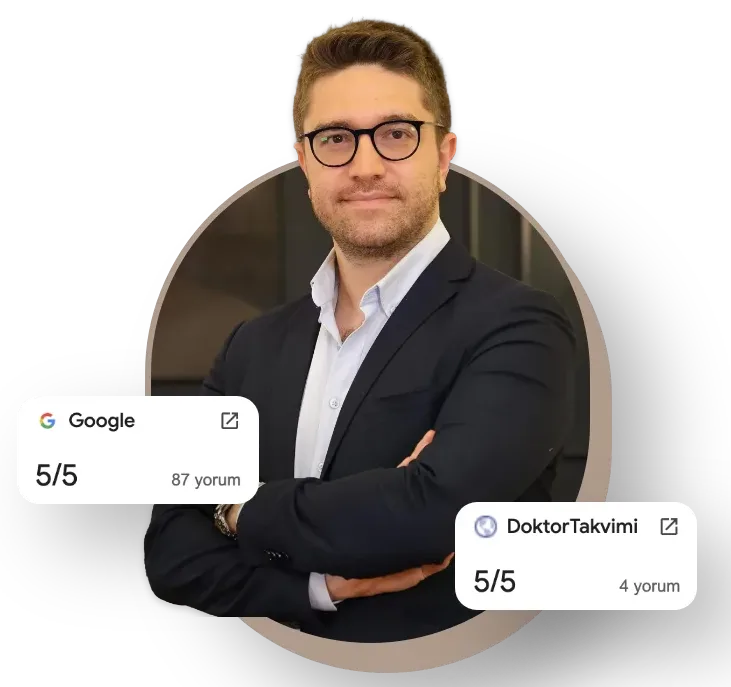
Op. Dr. Erman Ak is an internationally experienced specialist known for facial, breast, and body contouring surgeries in the field of aesthetic surgery. With his natural result–oriented surgical philosophy, modern techniques, and artistic vision, he is among the leading names in aesthetic surgery in Türkiye. A graduate of Hacettepe University Faculty of Medicine, Dr. Ak completed his residency at the Istanbul University Çapa Faculty of Medicine, Department of Plastic, Reconstructive and Aesthetic Surgery.
During his training, he received advanced microsurgery education from Prof. Dr. Fu Chan Wei at the Taiwan Chang Gung Memorial Hospital and was awarded the European Aesthetic Plastic Surgery Qualification by the European Board of Plastic Surgery (EBOPRAS). He also conducted advanced studies on facial and breast aesthetics as an ISAPS fellow at the Villa Bella Clinic (Italy) with Prof. Dr. Giovanni and Chiara Botti.
Op. Dr. Erman Ak approaches aesthetic surgery as a personalized art, tailoring each patient’s treatment according to facial proportions, skin structure, and natural aesthetic harmony. His expertise includes deep-plane face and neck lift, lip lift, buccal fat removal (bichectomy), breast augmentation and lifting, abdominoplasty, liposuction, BBL, and mommy makeover. He currently provides safe, natural, and holistic aesthetic treatments using modern techniques in his private clinic in Istanbul.

